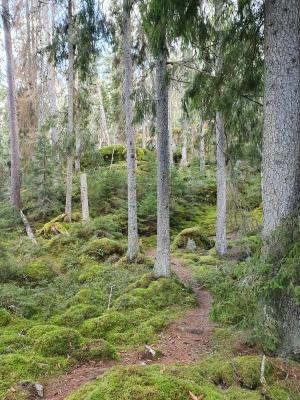Background & Aim
Stress alleviation from nature as an ecosystem service

Exposure to natural environments has been shown to have an alleviating effect on stress in us humans. Stress is involuntarily regulated by the autonomic nervous system, which divides into the sympathetic branch (fight or flight), and the parasympathetic branch (rest and digest). Research has shown that viewing green, natural environments can invoke a response from the parasympathetic branch and help the body recover from stress. It can reduce anxiety, and even help patients recover from surgery. Because of this effect, stress alleviation is considered an ecosystem service provided by nature for the benefit of human health and well-being.
But is this effect equal when viewing different types of natural environments? Is a natural forest with higher biodiversity better at alleviating stress than a low biodiversity spruce plantation, or an urban city? As Swedish natural forests are being replaced by production forests, leading to loss of biodiversity in one of our most common terrestrial ecosystems, what will happen to stress alleviation as an ecosystem service?
These are some of the questions I aimed to answer in this study. I wanted to put the future of human health in the perspective of ecosystem health and see if there is a difference in stress recovery in these environments.
Responsible for this page:
Director of undergraduate studies Biology
Last updated:
05/22/21
